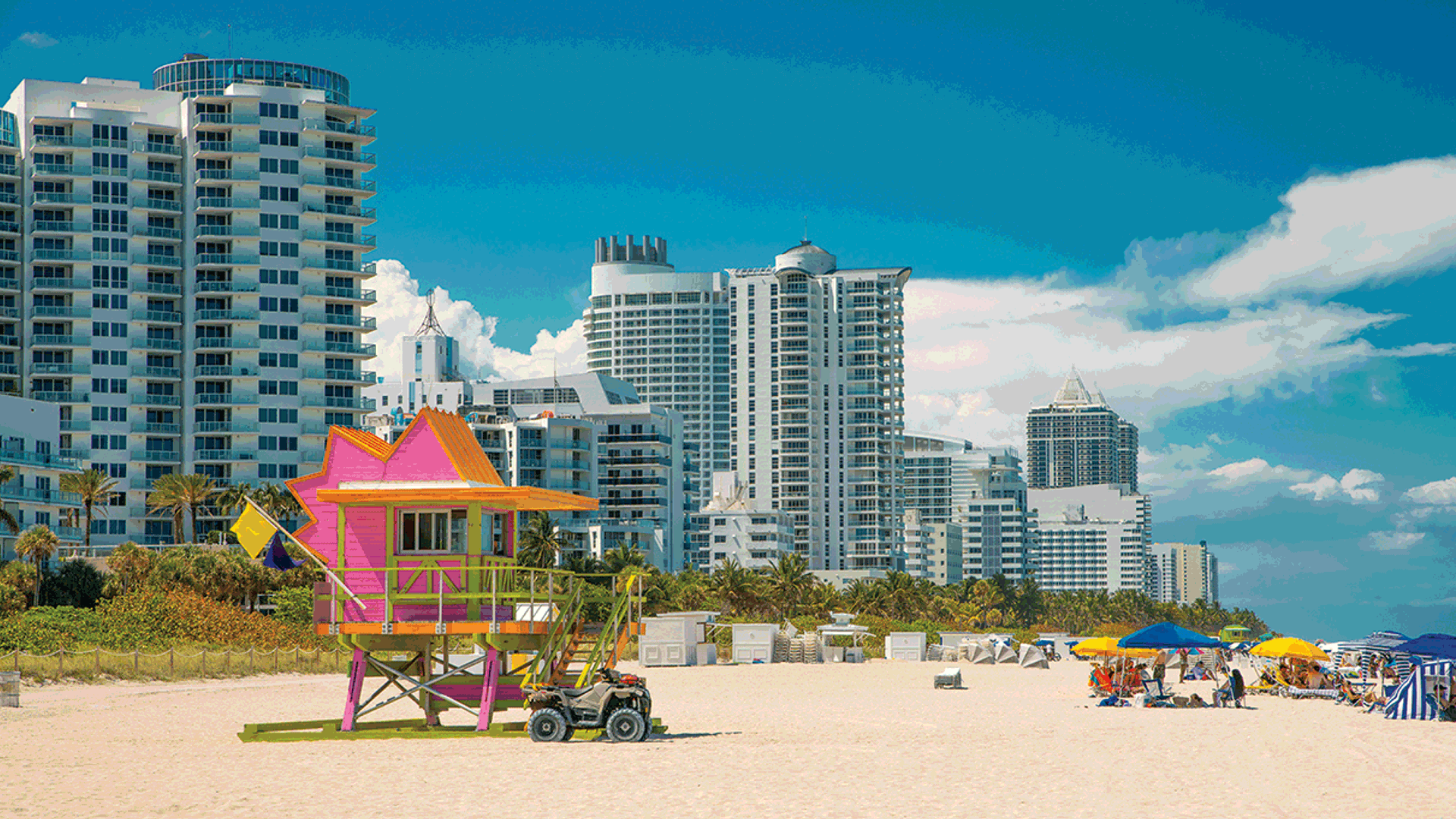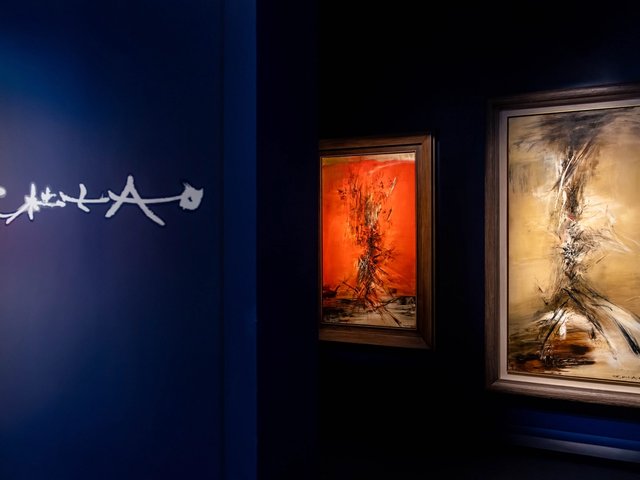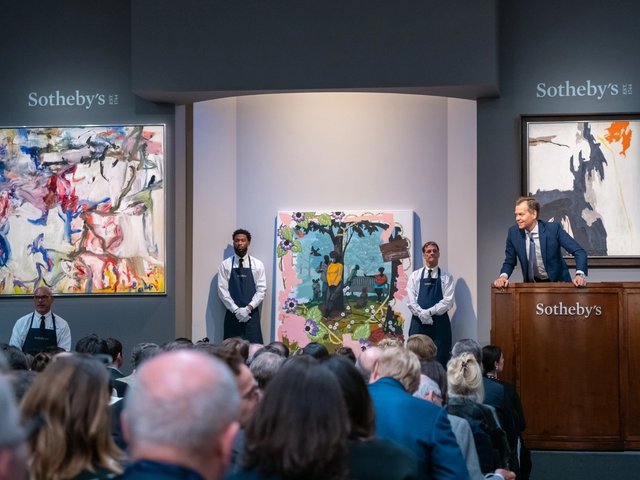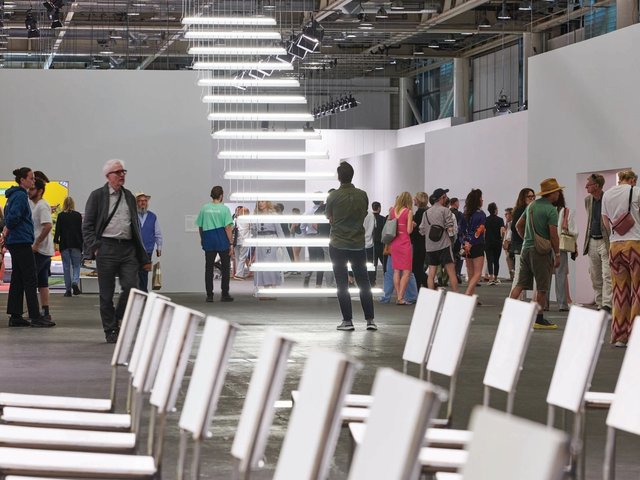Pretty well everyone in the international art market agrees the trade is slumping. The most pressing question this autumn is whether the slump is a mere cyclical downturn or something more seismic.
Aggregate global auction sales at Sotheby’s, Christie’s and Phillips declined 27% in the first half of 2024, with auction sales of post-war and contemporary art down 25.8% by value, according to the Contemporary Art Market Confidence Report published in July by the London-based analysts ArtTactic. The study’s Confidence Indicator, based on responses from 128 art world insiders, stood at 22 on a scale of 100, a four-year low.
“Negative market sentiment continues to outweigh positive voices in the market, and it is the fifth consecutive reading where pessimists outweighed optimists,” the report states. Only 6% of respondents thought conditions would improve in the year’s second half.
The declines in sales and sentiment loom over recent moves by the major auction houses. Sotheby’s and Christie’s are both in the process of making staff cuts. Sotheby’s majority owner, Patrick Drahi, struck a deal in August with the Abu Dhabi sovereign wealth fund ADQ for a minority stake in the auction house, which will result in a much-needed cash injection of around $1bn, with most of the money coming from the Arab state.
Anecdotal evidence points to a parallel downturn in the more opaque primary market, even among the major-name dealerships. Earlier this year, Marlborough Gallery closed permanently after eight decades in business; Mitchell-Innes & Nash shifted into operating as a “project-based advisory space”; Lévy Gorvy Dayan is to close its Hong Kong gallery; art market power couple Andrew Fabricant and Laura Paulson recently left their senior roles at Gagosian; and Pace cut ties with three senior directors.
“Things are quieter. Everyone is feeling it. But I’m amazed more galleries haven’t closed,” says Candace Worth, a New York-based art adviser specialising in the primary market for contemporary art. Worth points out that high interest rates are just one of many factors inhibiting demand, along with the escalating costs of collecting and a general sense of exhaustion in the overheated market for works by the most sought-after artists. She adds that those buying purely for investment have discovered how difficult it is to make money out of art.
“I really do believe things will settle out. But it may take a year,” Worth says.
Market misdirection
The paradox is that, until recently, stock markets around the world (with the important exception of China) have been booming. The Economist noted in July that “prices on a bourse near you have spent most of this year setting fresh records, only to break them again straight away”. America’s S&P 500 index had jumped by 70% since 2022 and was enjoying “its best streak in three decades”, the magazine added.
The international investment community has been making plenty of money. But why is more of it not being spent on art?
“It has been a challenging macro environment,” said Guillaume Cerutti, the chief executive of Christie’s, on a media call in July explaining why his company’s auction sales declined 22%, to $2.1bn, in the year’s first half. “Value was down. Supply wasn’t what it was last year.”
Alex Rotter, Christie’s chairman of 20th- and 21st-century art, said on the same call: “We are dependent on global events and emotion”, neither of which has been cooperating. The geopolitical instability caused by the ongoing wars in Ukraine and the Middle East, a stuttering Chinese economy and a looming US presidential election (among other factors) has spooked the wealthy, making them nervous about buying and selling high-value art.

Miami Beach, offering blue skies and low taxes for wealthy collectors
© artiom.photo
For the first time in decades, Christie’s did not hold an evening auction of Impressionist, Modern or contemporary art in London this June. The company announced it will only organise such sales in the UK capital in March and October, falling in line with the two-season schedules of its other major international sales venues in New York and Hong Kong.
Sotheby’s held faith with London’s summer art season by staging a 51-lot evening auction of Modern and contemporary works on 25 June. But its total of £83.6m (with fees) was down 56% on the £190.3m (with fees) achieved at the equivalent sale in June 2023.
Exemplifying the declining values of even supposed blue-chip art investments was the auction’s top lot, Jean-Michel Basquiat’s Portrait of the Artist as a Young Derelict (1982). Although this mixed-media triptych made £16m (with fees) at Sotheby’s this June, it had been withdrawn in May 2022 from a Christie’s auction in New York, where it carried a significantly higher unpublished estimate of $30m (around £23.6m).
Flight of the non-doms
It felt telling that Sotheby’s auction—scheduled the week before the UK election widely (and presciently) expected to install a new Labour government—was held in collaboration with the separately owned Sotheby’s International Realty (SIR). Glossy SIR brochures handed out at the preview advertised luxury properties in Miami, seemingly suggesting Florida, a state that levies no income or inheritance tax, as the logical haven for wealthy art collectors looking to escape Labour’s proposed scrapping of Britain’s non-domiciled (non-dom) resident status. If enacted, a tax bill of up to 40% of their worldwide earnings could be in store for this part-time population, which the Financial Times estimates at around 74,000.
“Non-doms are going. The money is leaving London,” says Wendy Goldsmith, an American-born art adviser who is in the process of selling her London apartment and relocating to Palm Beach, Florida. “Foreigners just don’t feel welcome. They’re going to Dubai, Monaco and Geneva for a multitude of reasons.”
It might seem that first Brexit and now Labour’s proposed tax rises will only strengthen Paris’s position as an international art hub, particularly with Art Basel Paris opening in the newly renovated Grand Palais this October after two editions (as Paris+ par Art Basel) in the Grand Palais Éphémère. But things are getting complicated in France, too.
Nicknamed “president of the rich” after abolishing wealth taxes and introducing a flat tax on capital, Emmanuel Macron has become a lame duck figurehead since France’s inconclusive parliamentary elections in July. He is presiding, for the moment, over left- and right-wing coalitions both vowing to hike taxes on the rich.
Dismantling the playgrounds?
Within a few more years, political forces may ensure that London and Paris are no longer the low-tax playgrounds for high-net-worth individuals that they once were. How much of a blow would this be to these cities’ art markets?
“Where you live no longer determines where you buy and don’t buy. The wealthy have multiple homes,” says Nazy Vassegh, the founder and chief executive of the Eye of the Collector fair, whose fourth edition took place at the Candy Brothers’ hyper-exclusive Chelsea Barracks development in London from 26-29 June.
Together with the nearby Treasure House fair, Vassegh’s boutique contemporary art and design fair aims to fill the gap left by the much larger MCH Group-owned Masterpiece London, whose permanent closure was announced in January 2023. The 18 exhibitors at the Eye of the Collector attracted 4,000 visitors, and around 50% of the buyers were “international”, Vassegh says. A custom-made jewellery cabinet by Zelouf & Bell was the most expensive sale, at £128,000.
This might seem a slightly underwhelming outcome given the proximity of the adjoining Chelsea Barracks, where properties cost up to £60m. But one wonders how much better the fair could have done had there been more signs of life in the Candy Brothers’ development, which currently resembles an under-occupied hotel complex designed by Albert Speer.
The increasingly peripatetic nature of private wealth is creating problems for the art trade. If the jittery rich flit between their various properties, never staying long enough in any progressively taxed city to have to pay up, it becomes difficult for auction houses, dealers and fairs to nurture a reliable client base. The global crowd will surely fly in for a destination fair like Frieze or Art Basel Paris, but what about other selling events?
Cerutti said on Christie’s July media call that during the last 20 years “there have never been more than two years of reduction in the art market”. This is true. But the two-year slumps in 2009-10 and 2020-21 were respectively caused by a global financial crash and a pandemic. The 21st-century art market has not yet had to contend with a prolonged period of geopolitical turmoil, which we appear to be entering.
“Rich people are super-sensitive about the slightest things at all times,” Vassegh says.
So, in a scarily turbulent world, where money can be made much more easily elsewhere, can we really assume that the tax-optimising, globe-trotting rich—particularly its younger generations—will continue to view art as an attractive investment? Or something they even care about?






